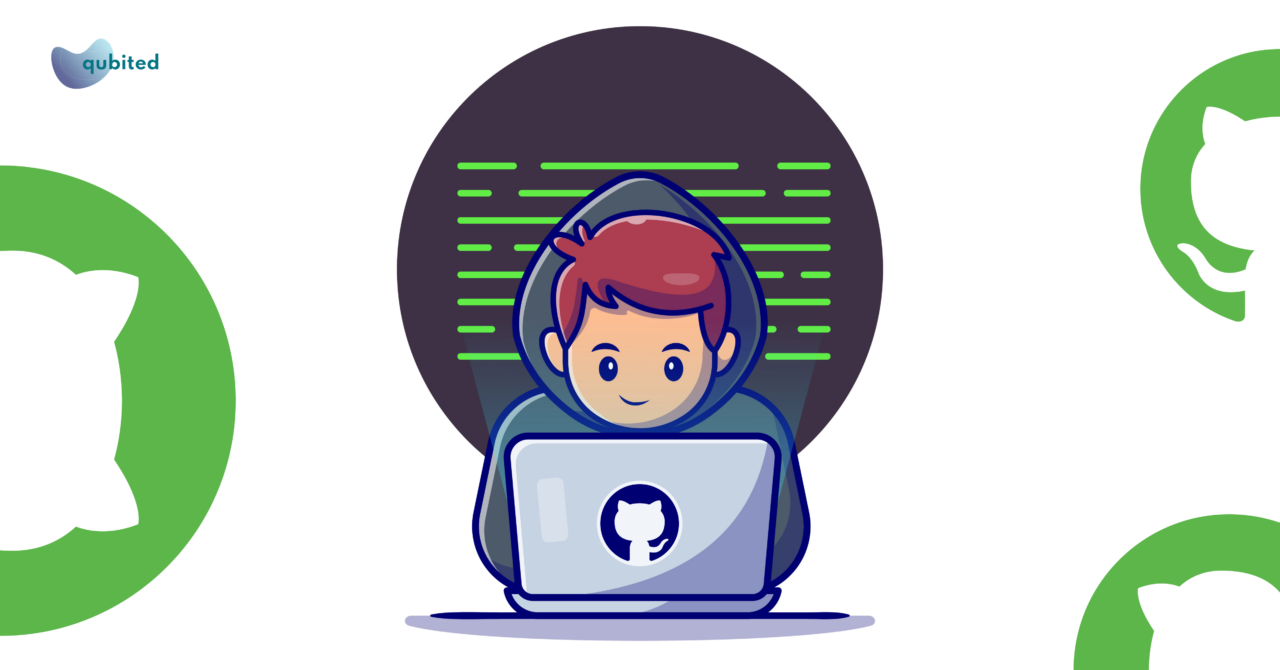Briefly introduce the importance of version control, specifically GitHub, and how mastering its commands can enhance collaboration and project management.
Git, a powerful version control system, is an essential tool for developers. Whether you’re just starting or looking to enhance your Git skills, this comprehensive guide will take you through fundamental and advanced commands, accompanied by live examples. Let’s dive into the world of Git and explore its capabilities!
Basic Commands for Beginners
git init: Initializing a new repository

git initinitializes a new Git repository in the current directory, marking it as a version-controlled project.- After running
git init, the existing folder (my_projectin this case) becomes a Git repository, ready for version tracking and commits.
2. git clone: Cloning a repository

git clone commandis used to duplicate an existing repository. The provided URL (https://github.com/username/repo.git) is the source repository to be copied.- When you run
git clone, it creates a new directory (here,repo) and copies all the files from the source repository into the newly created directory.
3. git add: Staging changes

When you use 'git add file.txt'stages change in the specific filefile.txt, preparing them for the next commit.git add .stages all changes in the current directory and its subdirectories, readying them for the next commit.
4. git commit: Committing changes

git commit -m "Commit message"records the staged changes into a new commit with a brief descriptive message.- It captures the snapshot of the changes, providing a reference point for future collaboration or version history
5. git push: Pushing changes to a remote repository

git push origin mastersends the committed changes from your local branch (master) to the remote repository named ‘origin’.- It ensures your contributions are reflected and shared with collaborators, updating the remote repository with your latest work.
Branching and Merging
git branch: Creating and managing branches

With git branch new_featurecreates a new branch named ‘new_feature’, allowing you to work on a separate set of changes.git checkout new_featureswitches to the ‘new_feature’ branch, enabling you to develop and isolate changes without affecting the main branch.
2. git merge: Merging branches

- To integrate changes, navigate to the main branch using
git checkout main. git merge new_featurecombines the changes from the ‘new_feature’ branch into the main branch, integrating new features or fixes.
3. git pull: Pulling changes from a remote repository

git pull origin mainretrieves changes from the remote repository’s ‘main’ branch and incorporates them into your local branch.- It is a combination of
git fetch(fetches changes) andgit merge(merges changes into your local branch).
Advanced Commands
git rebase: Rebasing branches

bash Copy code git reset --hard HEAD~1
This command resets the latest commit and discards all changes, reverting the repository to the state of the previous commit.
2. git log: Viewing commit history

Explore the Git commit history, gaining insights into contributors, commit messages, and changes made over time.
3. git reset: Resetting changes

Undo changes and reset the repository to a designated commit, discarding any alterations made after that point in the commit history.
4. git cherry-pick: Picking specific commits

In this example, abc123 is the unique identifier (commit hash) of the commit you want to pick. The cherry-pick operation takes the changes introduced in the specified commit and applies them to your current branch.
Undoing Changes
git revert: Creating a new commit that undoes a previous commit

In this example, abc123 represents the unique identifier (commit hash) of the commit you want to undo. When you run this command, Git creates a new commit that undoes the changes made in the specified commit.
This is particularly useful when you want to keep a record of the fact that certain changes were reverted. It adds a new commit to the history rather than modifying existing commits.
Remember to replace abc123 with the actual commit hash, you want to revert in your projects.
2. git reset: Unstaging changes

This command removes changes staged for the specified file, allowing you to unstage modifications while retaining them in the working directory.
Working with Remotes
git remote: Managing remote repositories

This command associates a remote repository named ‘origin’ to your local repository, enabling you to interact with the linked remote.
2. git fetch: Fetching changes from a remote repository

This command fetches the latest changes from the remote repository, allowing you to review them before incorporating them into your local branches.
3. git remote show: Displaying information about a remote

This command provides insights into the specified remote repository, including remote branches, tracked branches, and configuration details.
4. git push --force: Forcing push changes to a remote repository

Use with caution, as it can overwrite remote changes. It’s helpful in situations where you need to update the remote branch with local changes and force-push to override conflicting history.
Tagging
git tag: Creating and managing tags

2. git show: Displaying information about a tag

Tags are used to mark specific points in Git history, often used for versioning. The git tag the command creates a new tag, and git show displays information about the specified tag, including associated commits and changes.
Git Ignore
.gitignore: Ignoring files and directories
Create a file named .gitignore and add:

The .gitignore file is used to specify files or directories that Git should ignore. Edit it by adding names or patterns of files you want to exclude, then save and exit. This helps prevent unnecessary files from being tracked in your repository.
Conclusion:
Congratulations! You’ve now covered a range of Git commands list, from the basics to more advanced techniques. Remember, mastering Git takes practice, so feel free to experiment with these commands in your own projects. Happy coding!



